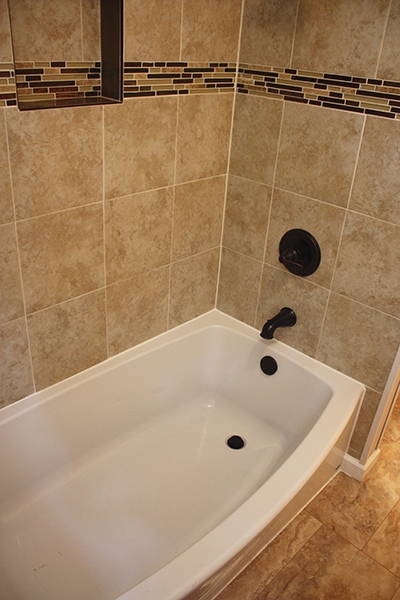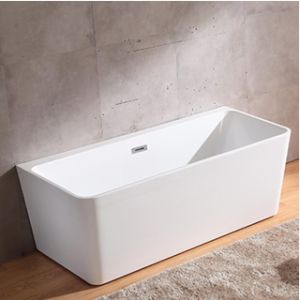Plumbing Basics: An Essential for Installing a Bathtub
Plumbing Basics: An Essential for Installing a Bathtub
Blog Article
They are making several good annotation relating to A Step-by-Step Guide to Installing a Bathtub in general in this great article down below.

Setting up a bathtub isn't specifically rocket science, yet it does require strong plumbing, carpentry, and in some cases, tiling abilities. Changing an old tub with a brand-new one is likewise a reasonably difficult job. If the old bathtub is conveniently accessible, the project can move immediately; if you need to open up a wall surface to remove the old bathtub and place the new bath tub, the task is a lot harder. In either instance, the job is within a residence handyman's skills, although you will need an assistant to move out the old tub and also set in the new one. See to it you have qualified on your own for the task and also are comfortable attempting it. Instead of hiring a service provider to take control of a halfway-completed job, it is better to take into consideration utilizing one before you start. Opportunities are you may require an expert plumber to make tube connections.
This article will certainly aid you mount a brand-new tub in your shower room if you have actually currently purchased a brand-new bathtub and also do not need to transform the plan of your previous supply of water pipes.
Your tools and material checklist must make up the following:
Removing Old Taps
If you need to change old faucets with brand-new ones as a part of your installation, after that the first thing you should do is disconnect the water. After doing so, switch on the faucets to drain any kind of water continuing to be in the system. The process of getting rid of the existing faucets can be rather problematic because of the limited access that is frequently the instance.
Utilize a basin wrench (crowsfoot spanner) or a faucet tool to reverse the nut that connects the supply pipelines to the faucets. Have a fabric all set for the staying water that will certainly come from the pipelines. As soon as the supply pipes have actually been gotten rid of, make use of the same tool to loosen up the nut that holds the taps onto the bath/basin. You will require to stop the single taps from turning throughout this process. When the taps have actually been eliminated, the holes in the bath/basin will certainly have to be cleansed of any type of old securing compound.
Prior to proceeding to fit the new faucets, compare the pipeline links on the old taps to the brand-new taps. If the old taps are longer than the brand-new taps, then a shank adapter is needed for the new taps to fit.
Fitting New Touches
If the tails of the new taps are plastic, then you will need a plastic port to stop damage to the string. One end of the connector fits on the plastic tail of the tap and the various other end offers a connection to the current supply pipelines.
If you need to fit a monobloc, then you will certainly need minimizing couplers, which connects the 10mm pipeline of the monobloc to the typical 15mm supply pipeline.
Next off, place the faucet in the installing hole in the bath/basin guaranteeing that the washers remain in area in between the tap and the sink. Safeguard the tap in place with the supplier given backnut. When the tap is securely in position, the supply pipelines can be connected to the tails of the faucets. The taps can either be attached by utilizing corrugated copper piping or with normal faucet connectors. The former kind must be attached to the tap ends first, tightening only by hand. The supply pipes can later on be attached to the various other end. Tighten up both ends with a spanner after both ends have actually been attached.
Installing the Bathtub
Using the two wooden boards under its feet, position the bath tub in the called for placement. The wooden boards are valuable in uniformly spreading the weight of the bathtub over the location of the boards as opposed to focusing all the weight onto four tiny factors.
The next objective is to guarantee that the bath tub is leveled all round. This can be attained by inspecting the level and also adjusting the feet on the bath tub till the level reviews degree.
To set up taps, fit the bottom of the furthest flexible tap connector to the appropriate supply pipe by making a compression sign up with; after that do the very same for the various other tap.
Switch on the supply of water and check all joints and also brand-new pipework for leaks and tighten them if necessary. Load the tub and also check the overflow electrical outlet as well as the normal electrical outlet for leaks.
Finally, deal with the bath paneling as described in the maker's instruction manual. Tiling and also securing around the tub needs to wait up until the bath tub has been made use of a minimum of once as this will certainly settle it into its final placement.
Planning for the Installation
To start with, the supporting framework provided with the bath ought to be fitted (if required) according to the maker's guidelines. Next, fit the taps or mixer to the bath tub. When suitable the tap block, it is very important to see to it that if the tap includes a plastic washing machine, it is fitted in between the bathroom and also the taps. On a plastic bath, it is also sensible to fit a supporting plate under the taps unit to avoid stress on the tub.
Fit the versatile tap connectors to the bottom of both faucets making use of 2 nuts as well as olives (often provided with the tub). Fit the plug-hole outlet by smearing mastic filler round the sink outlet opening, and after that pass the outlet via the hole in the bathroom. Utilize the nut provided by the maker to fit the plug-hole. Analyze the plug-hole outlet for an inlet on the side for the overflow pipeline.
Next off, fit the end of the adaptable overflow pipe to the overflow outlet. Afterwards, screw the pipe to the overflow face which need to be fitted inside the bathroom. Make certain you use every one of the supplied washing machines.
Connect the catch to the bottom of the waste outlet on the bath tub by winding the thread of the waste electrical outlet with silicone mastic or PTFE tape, and screw on the catch to the outlet. Attach the bottom of the overflow tube in a similar manner.The bathroom should currently prepare to be fitted in its final placement.
Tiling Around the Bath tub
In the area where the bathroom fulfills the floor tile, it is essential to seal the joins with a silicone rubber caulking. This is important as the fitting can relocate sufficient to crack a rigid seal, triggering the water to permeate the wall surface in between the bathroom and also the tiling, leading to problems with moisture and also feasible leakages to the ceiling listed below.
You can select from a selection of coloured sealers to assimilate your components and also installations. They are offered in tubes as well as cartridges, as well as are capable of sealing gaps approximately a size of 3mm (1/8 inch). If you have a bigger space to fill, you can fill it with spins of drenched newspaper or soft rope. Remember to constantly fill up the bath tub with water before sealing, to permit the motion experienced when the tub remains in usage. The sealant can fracture relatively early if you do not consider this movement prior to sealing.
Conversely, ceramic coving or quadrant ceramic tiles can be made use of to edge the bathroom or shower tray. Plastic strips of coving, which are easy to use as well as reduce to size, are additionally easily readily available on the market. It is suggested to fit the tiles making use of water-resistant or water resistant glue and grout.
Bathtub Installation
How Important Is A Bathtub To Your Home?
High-quality baths, showers, and other bathroom updates are necessary when considering a smart investment in your home. It’s a room that you go to every day and one that is constantly being used by guests.The bathroom is one of the top trafficked rooms in a home and also one of the most valuable in terms of home resale.
Install Piping Before Tub
You will be using your existing drain and waste vent system, but pipes required include the hot and cold water supply lines and a pipe leading to a shower head. A mixing valve and shower head are also needed. Air chambers may be required.
Position the Tub
Lower the tub into place so that the continuous flange fits against the wall studs and rests on 1’x4' or 2’x4' supports. Anchor the tub to the enclosure with nails or screws inserted through the flanges into the studs.
NOTE: Remember, bathtubs and shower stalls may require support framing. A bathtub filled with water is extremely heavy, so check building codes and framing support before installing the tub.
Assemble Drain Connections
Assemble the bathtub drain connections by connecting the tub overflow with the tub drain above the trap, not beyond it. The trap will have a compression fitting that screws over the arm of the overflow assembly.
Place a Pipe For the Shower Head
First, locate a brass female threaded winged fitting and attach it to a framing support via a screw or a nail. Then run a pipe up the wall for the shower head. Sweat or solder the other side of the brass fitting to the top of the pipe.
Attaching Hot and Cold Water Lines
Attach your water lines for both hot and cold by sweating these directly into the hot and cold ports of the mixing valve. The mixing valve will be how water enters the tub’s system, not by the pipes themselves.
Install the Spout
Extend a piece of 1/2 inch pipe, or whichever length is specified in the manufacturer’s instructions, for the tub spout. Sweat on a male threaded fitting at the end of the pipe or use a brass nipple of the proper length and a 1/2 inch cap.
NOTE: At this point you should have your rough-in plumbing work inspected before proceeding further.
Check For Leaks
Restore the water pressure and check the drain connection and the supply pipes for any sign of leaking.
estore the Bathroom Wall
Replace the wall with moisture-resistant drywall as a base for your wall covering. Seal the joints between the wall and your new tub with silicone caulk as protection against water seepage.
https://www.berkeys.com/2016/12/02/bathtub-installation-dallas/

I came across that blog posting about Tools You Need to Install a New Bathtub while surfing around the web. Do you know another individual who is excited by Installing A Bathtub? Be sure promote it. Thanks for going through it.
We're on standby! Report this page